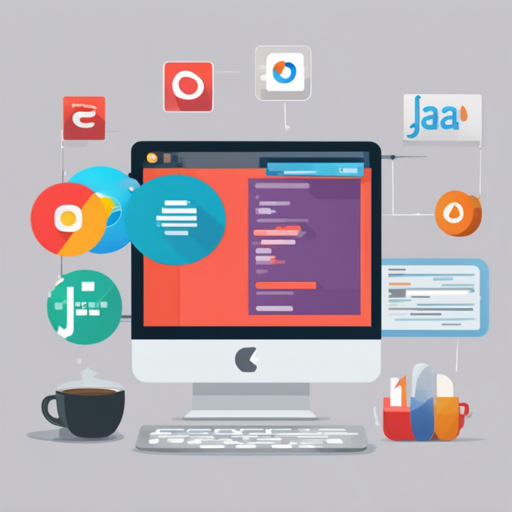Welcome to this user-friendly guide on how to utilize the Java Chromium Embedded Framework (JCEF) for embedding Chromium-based browsers in your Java applications. This framework is a powerful tool that simplifies the integration of a web browser into your desktop application, leveraging the robustness of the Chromium project.
What is JCEF?
The Java Chromium Embedded Framework (JCEF) serves as a wrapper around the Chromium Embedded Framework (CEF), allowing developers to embed web content directly within Java applications. Imagine you’re constructing a house (your application), and the JCEF acts as a window that lets sunlight (web content) flood into your home without compromising your brick and mortar structure (the core functionality of your application).
Key Features of JCEF
- Easy integration of web technologies into existing applications.
- Supports HTML5-compliant web browser controls.
- Lightweight native “shell” applications for user interfaces predominantly built using web technologies.
- Ability to render web content off-screen for custom applications.
- Facilitates automated testing of existing web properties.
Steps to Build JCEF
Building JCEF is a straightforward process due to the well-documented studio support provided by CEF. Below are the essential steps to build JCEF:
- Download the JCEF source code from the official repository.
- Follow the guidelines on the Branches and Building Wiki page for platform-specific instructions.
- Once built, package it into a binary distribution for convenient deployment.
Example Code
Here is an example code snippet that demonstrates how to display web content using JCEF:
public class MyBrowserApp {
public static void main(String[] args) {
// Initialize the framework
CefApp app = CefApp.getInstance(args);
CefClient client = app.createClient();
// Create a browser window
client.createBrowser("http://example.com", false, false);
app.addAppHandler(new MyAppHandler());
app.run();
}
}
In this code, we are initializing the JCEF framework, creating a CefClient, and then using that client to create a browser window that displays a web page. Think of it as opening a book (the browser) to a specific page (the URL) so that the reader (user) can access the information within it.
Troubleshooting Common Issues
Like any software integration, you may encounter roadblocks while using JCEF. Here are some troubleshooting ideas:
- Issue: Application fails to launch.
- Check that all dependencies are correctly installed.
- Ensure that you’re using the correct JCEF version compatible with your Java version.
- Issue: Web content not displaying properly.
- Review your network permissions and ensure the application has access to the web.
- Try clearing the cache or reverting to default settings.
For more insights, updates, or to collaborate on AI development projects, stay connected with fxis.ai.
Contributing to JCEF
If you want to contribute to the continued improvement of JCEF, consider the following ways:
- Vote for issues in the JCEF issue tracker that matter most to you.
- Report bugs or suggest new features after searching for existing issues.
- Write unit tests to enhance functionality and stability.
- Submit pull requests or patches with your changes, ensuring they align with the existing coding styles.
At fxis.ai, we believe that such advancements are crucial for the future of AI, as they enable more comprehensive and effective solutions. Our team is continually exploring new methodologies to push the envelope in artificial intelligence, ensuring that our clients benefit from the latest technological innovations.
Conclusion
With JCEF, embedding web browser functionality into your Java applications is no longer a daunting task. By following these steps, you can seamlessly integrate web technologies, enhance your applications, and provide your users with a richer experience. Happy coding!

